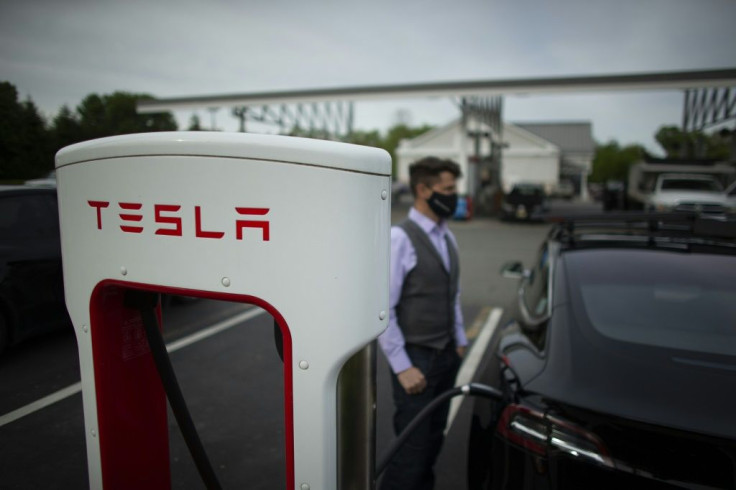Tesla's Move To Open Supercharger Network To Non-Teslas Is A Start, Not A Solution
News that Tesla is planning to open its Supercharger network to non-Tesla electric vehicles (EV) in the U.S. is welcomed by an industry that has struggled with a sparse electric vehicle charging infrastructure. After piloting the concept in 13 European countries, Tesla’s move to bring the program to the U.S. could alleviate near-term supply issues when it comes to the availability of fast EV charging.
Unfortunately, while the move should improve accessibility to EV charging stations, it does little to address the larger challenges in EV charging. Beyond the rapidly growing need to build out a more robust network of charging stations, fundamental problems with EV charging infrastructure need to be addressed to support the coming surge in the number of EVs on the road. In order to address those challenges, fundamental changes to the way we currently approach EV charging must be made.
EV charging challenges remain despite Supercharger expansion
There are three major challenges in EV charging today: accessibility, speed, and stability. Each of these challenges becomes more acute as the number of EVs on the road increases. Given that estimates suggest there will be 22 million EVs on the road by 2030, requiring 100,000 fast charging stations across the country, addressing these challenges as the infrastructure scales is critical.
Opening the Tesla Supercharger network to non-Teslas helps take pressure off the accessibility issue for the moment, but it does little to address the issues around speed and stability of EV charging. While the Supercharger network is generally faster than other charging stations, it still takes about 30 minutes to fully charge from empty, much longer than an internal-combustion engine (ICE) vehicle needs to fill up at a gas station.
Additionally, the design of Supercharger charging stations relies on a connection to the grid, drawing power from a central source to distribute to each charging station on site. Not only does this mean slower charging times when there are more vehicles present, but it also means speed and cost could fluctuate with grid demand. Charging during peak hours while many other drivers are charging their vehicles could be time-consuming and expensive.
In order to scale to the capacity that will be needed in a few short years, EV charging infrastructure will need to evolve significantly, both conceptually and at the component level.
Energy storage-based EV charging stations are the future
There are, however, companies working on a different model — one based on energy storage. Charging stations that are able to collect and store energy from the grid (ideally during off-peak hours) will be ready to charge EVs directly, without the need to draw from the grid during charging.
In addition, energy storage EV charging units can effectively link up with renewable energy producers to leverage the expansion of clean energy. Energy generated by solar facilities, for example, could be stored in these EV charging units and put to use anytime an EV driver pulls up for a charge.
Finally, these charging stations would be able to deliver energy back to the grid when charging demand is low, supporting demand for electricity in other ways when the grid is overburdened. This can prevent shortages and failures by offering support to the wider network.
EV technology improvements are needed to realize success
In order to make the most of an improved energy storage EV charging infrastructure, there need to be some improvements to EV technology, from the batteries themselves to individual components.
For example, EV charging requires highly efficient power converters that can change alternating current to direct current. Electricity sourced from the grid would be AC which would need to be converted to DC for EV charging.
Historically, power converters have been a major source of energy loss. That inefficiency would result in shorter ranges and slower charging times for EVs. In addition, energy loss takes the form of heat and the need to install thermal management components to eliminate it. In an EV, this makes the car heavier and further reduces range. So, how can power converters be made more efficient?
One way in which power converter efficiency can be increased is by using more efficient semiconductor devices. Semiconductor devices open and close to control the flow of energy across a circuit, such as when an EV is drawing power from a charging station or its battery. Practically, better semiconductor devices mean more efficient power conversion, lower losses, and increased EV range.
Coupling improvements in semiconductor devices and battery technologies could drastically improve how EVs use electricity, expedite the charging experience, and increase range.
The EV industry is already evolving in this direction
These are moves that are already being made by the industry. There are companies already piloting their solid-state batteries for EVs. And improving component-level performance, such as developing semiconductor devices more efficient than the Insulated Gate Bipolar Transistors (IGBT) currently used across the industry, will help make the most of this innovative progress. Technologies like this are aimed at a future of EV charging based on renewables, energy storage, and mass adoption, rather than creating a band-aid fix that puts pressure on the grid and does little to drive the EV space forward into a sustainable future.
(Daniel Brdar is the CEO of Ideal Power Inc.)

© Copyright IBTimes 2024. All rights reserved.





















